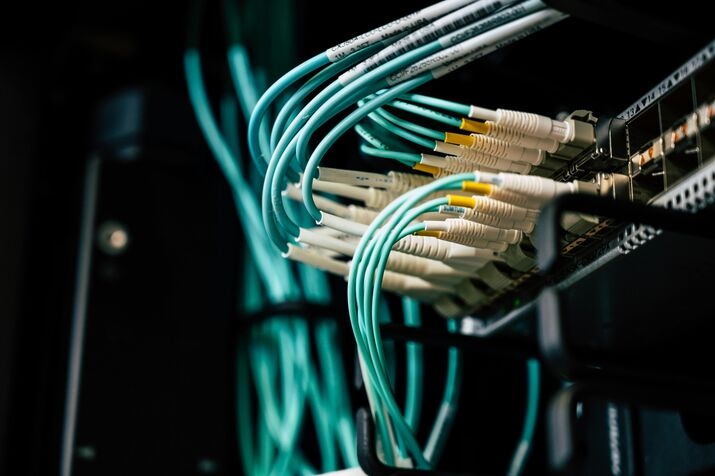Top Data Center Network Design and Security Trends for 2025: Best Practices in Canada
In 2025, data center networks are under immense pressure from surging AI workloads, escalating cyber threats, and the need for ultra-low latency. With global cybercrime costs projected to reach $10.5 trillion annually, network breaches in data centers remain a top concern, often stemming from inadequate design and security measures. In Canada, where data centers are expanding rapidly in regions like Alberta and British Columbia, robust network design and security are essential for resilience and performance. As a Calgary-based expert in data center network design and security, Purchase Power helps operators build secure, high-performance networks tailored to these challenges.
If you’re searching for “data center network design trends 2025” or “data center network security best practices,” this guide provides the latest insights, trends, and actionable strategies to optimize your infrastructure.
Key Trends in Data Center Network Design for 2025
Data center network design is evolving to support AI, edge computing, and sustainability. Here are the top trends shaping the industry:
1. AI-Driven Network Automation and High-Density Architectures
AI is transforming data center network design by enabling automated traffic management and predictive scaling. With data centers needing higher density fiber to handle massive data volumes at faster speeds, designs now incorporate 400G/800G Ethernet and optical interconnects for AI workloads. In 2025, modular campus designs and AI-optimized racks are becoming standard to manage power demands exceeding 100kW per rack.
2. Edge Computing and Distributed Networks
The rise of edge computing is pushing data center network design toward decentralized models, reducing latency for real-time applications. Trends include hybrid edge-core integrations with SD-WAN for seamless connectivity, especially in Canada’s vast geography. This shift addresses power supply issues and supports AI at the edge, with networks designed for scalability and low-latency bandwidth optimization.
3. Sustainability-Focused Designs
Energy efficiency is a core trend in data center network design, with liquid cooling and renewable integration reducing carbon footprints. Networks are being optimized for power usage effectiveness (PUE) below 1.3, incorporating green routing protocols and energy-aware traffic engineering. In Western Canada, where hydropower is abundant, designs emphasize sustainable, high-performance architectures.
4. Modular and Scalable Infrastructures
2025 sees a boom in modular data center designs, allowing rapid expansion with prefabricated components. Network designs incorporate spine-leaf topologies for better scalability and fault tolerance, supporting hyperscale growth projected at $106.7 billion.
These data center network design trends highlight the need for forward-thinking architectures that balance performance, cost, and sustainability.
Emerging Trends in Data Center Network Security for 2025
Network security in data centers is critical as threats grow more sophisticated. Here’s what’s ahead:
1. Zero-Trust and Micro-Segmentation
Zero-trust architectures are mandatory, with micro-segmentation isolating workloads to prevent lateral movement during breaches. In 2025, this trend intensifies, especially for AI-heavy networks vulnerable to multivector attacks. Canadian data centers must comply with national security guidelines, making zero-trust a key defense.
2. AI-Powered Threat Detection
AI is dual-edged: It enhances network security through real-time anomaly detection but also enables advanced attacks. Trends include AI-integrated intrusion detection systems (IDS) and automated response in data center networks. With 21% of cloud incidents leading to breaches, AI helps mitigate risks in hybrid environments.
3. Enhanced Regulatory and National Security Focus
Data centers are viewed as critical infrastructure, with trends toward stricter privacy and national security measures. Network security must address supply chain vulnerabilities and nation-state threats, incorporating encrypted communications and secure VPNs.
4. Integrated Physical and Digital Security
Modern data center “villages” pose new challenges, blending physical access controls with network security. Trends include digitalization of surveillance and AI-driven monitoring to protect against insider threats and physical breaches.
These data center network security trends emphasize proactive, layered defenses to combat rising threats.
Best Practices for Data Center Network Design and Security
Implementing strong practices can safeguard your data center network:
Optimize Network Architectures:
Use SD-WAN, VPNs, and VPCs for hybrid environments to reduce latency and enhance bandwidth. Adopt spine-leaf designs for scalability.
Implement Multi-Layered Security:
Deploy next-generation firewalls (NGFW), IDS, and segmentation. Rule-based management and micro-segmentation limit breach impacts.
Conduct Regular Assessments:
Perform vulnerability scans and audits to identify weaknesses in network configurations.
Secure Remote Access:
Use encrypted tunnels and least-privilege access to protect against unauthorized entry.
Integrate Sustainability:
Design networks with energy-efficient protocols to align security with green initiatives.
Following these data center network design and security best practices can reduce risks, with breaches costing an average $4.88 million globally.
How Purchase Power Enhances Data Center Network Design and Security
At Purchase Power, we specialize in data center network design and security, helping Canadian operators create secure, high-performance architectures. Our CCIE-certified expert, brings 10+ years of experience in firewalls (Palo Alto, Cisco, Checkpoint), VPN/WAF optimization, zero-trust models, and compliance with PCI DSS, NIST, and ISO standards.
We design networks for application and data center connectivity, implementing SD-WAN, VPNs, and VPCs for hybrid/cloud environments. Our focus on optimizing latency, bandwidth, and security through firewalls, intrusion detection, and segmentation ensures robust protection—achieving up to 98% performance boosts and 100% compliance in past projects.
Real-World Example: Securing a Growing Data Center Network
Consider a small Alberta data center expanding amid AI demands. Facing latency issues and breach risks, Purchase Power redesigned their network with zero-trust segmentation and SD-WAN, integrating firewalls for threat containment. The outcome: Reduced latency by 50%, zero breaches in the first year, and seamless scalability—echoing our proven expertise.
Secure Your Data Center Network Today
In 2025, effective data center network design and security are non-negotiable. Contact Purchase Power at info@purchasepower.ca or 1-825-210-9733 for expert guidance tailored to your needs.




